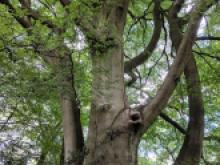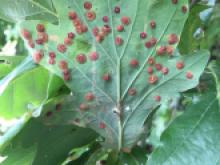One of the most important groups of animals associated with veterans is the thousands of insects and other invertebrates that live on the trees. As well as the caterpillars, gall wasps and others that live on the leaves and bark of younger trees, veterans have their own group of creepy crawlies that feed specifically on the dead and rotten wood that they contain.
Many of these invertebrates have larval stages where the insect is little more than a tube with a mouth at the front that munches its way through rotting wood and then transforms into a much more flamboyant adult that flies off into the world to find a mate and reproduce.
But wood is hard to digest – it contains huge amounts of cellulose, a very hard and difficult to digest substance – and so the bugs need a helping hand which usually comes in the form of fungi and bacteria that begin the breakdown of the wood before the insects eat it.
Some insects actually carry fungi spores in specially evolved sacs to the tree where they lay their eggs to infect the tree and make sure that when their eggs hatch the fungi have already started to prepare the youngster’s diner.
Many beetle species form massive colonies that can live on the same tree for decades. Some species are specially adapted to eat only the wood that is truly dead and that way they don’t kill the tree that they require to live. Our famous and endangered stag beetle relies on large dead timber for it larvae to feed in. These grubs can stay there doing nothing but eating for several years before becoming an adult.
Our bees and wasps often choose to nest in the nooks and crannies found in our large trees and these insects go on to pollinate our gardens and our crops.
Many rare solitary bees and wasps also require trees where they use small holes to lay their eggs. Many wasps parasitize the grubs that live in rotting wood by laying their eggs on or even in them ready to hatch and eat their host. Gruesome, but fascinating!
I could go on for some time about the weird and wonderful behaviours and adaptations of dead wood insects but that would make for a rather lengthy blog. Suffice it to say they are very interesting indeed and without them we wouldn’t be able to enjoy some of our more conspicuous wildlife.
Next week I’ll be looking at one of the groups of animals that feed on all these creepy crawlies ... bats!
This weeks tree trivia: In pagan traditions elder trees were considered to keep devils and evil spirits away and so were often planted by doorways into buildings. It turns out that elder produces a scent that repels flies and other insects and so the myth of keeping evil things away sprung up from the fact people planted them to keep their homes pest free.




